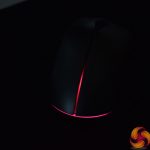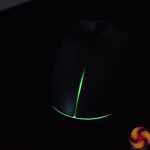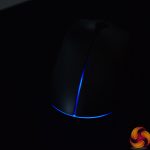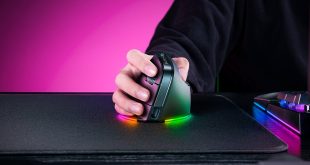To test the Strix Evolve, I used it as my daily driver for over a week. During this time, I played a few games, edited my photos for various reviews and of course browsed the web and did other office-related tasks.
Let's start by looking at the included software, ROG Armoury:
Above you can view a gallery of the different pages and tabs available to the end-user. I've used ROG Armoury a few times now and the experience is definitely positive – it is well laid-out and has all the important bits (DPI stages, lighting, macros etc) covered. My only real complaint has been made before: users can only set two DPI stages. It is a minor point but I would like to see the option for more. After all, it can't hurt to at least give the option to end-users.
The RGB lighting is also quite decent. It is controlled via the ROG Armoury software (unless you have other Aura-compatible products and control it that way) and users can choose between static, breathing, colour cycling or reactive effects.
It is certainly quite subtle RGB lighting, unlike the gloriously over-the-top Gladius II, but the colours look good and it will likely appeal to those looking for something a bit more understated.
Now, let's talk about using the mouse day-to-day. I'll start with the replaceable panels and, spoiler alert, I think this is a brilliant feature that really elevates the Strix Evolve above its competition.
Simply put, the panels just give you extra control over how you want your mouse to feel. I tested all the different configurations, and as a right-hander I did prefer the ergonomic right-handed shape, but both the ambidextrous shapes were very comfortable as well. I am sure this feature will also appeal to lefties as they often have to make do with ambidextrous designs since mice specifically tailored to left-handers are few and far between.
Overall, it is quite a simple feature really, but it is one of those things where you stop and wonder, ‘why did no one think of this before?' In any case, I love how it works and the choice between 4 different shapes is great for consumers.
Also related to the design of the mouse is the use of two buttons on both sides – this is obviously tailored towards lefties as most mice just have side buttons on the left-hand side, where a right-hand thumb would rest. I did think I would run into issues here, maybe by accidentally pressing the extra buttons with my fourth-finger. However, in reality, it was a total non-issue – with my preferred claw grip, I couldn't even feel the extra buttons, let alone come close to pressing them, so ASUS ROG has done well to get them on without making it an issue for others.
Elsewhere, the sensor is worth touching on. ASUS has gone with the PMW 3330 here, and its max DPI of 7200 is surely more than enough for anyone half-sensible. The PMW 3330 may not be considered as high-end as the class-leading PMW 3360 but I had no issues with it at all – tracking was very smooth and as precise as I am used to, while there is zero unwanted acceleration unless you enable it in the software.
Hardcore gamers may find the 128g weight (including cable) problematic, though. Personally, I reckon the Strix Evolve cuts the perfect balance between heft and speed, but a weights system would have been a great inclusion. That would just give it an extra dimension with its customisable approach.
 KitGuru KitGuru.net – Tech News | Hardware News | Hardware Reviews | IOS | Mobile | Gaming | Graphics Cards
KitGuru KitGuru.net – Tech News | Hardware News | Hardware Reviews | IOS | Mobile | Gaming | Graphics Cards















This name is lousy and not unique, Phanteks should sue.
aaaaaaaaaaaaaaaaaaaaaaaa
Collect 150 bucks /per day in time of your choice by performing work with this program I run into via the internet… Look it over, and start out on receiving profit from this moment!>>> http://smarturl.co/EAZNQgR